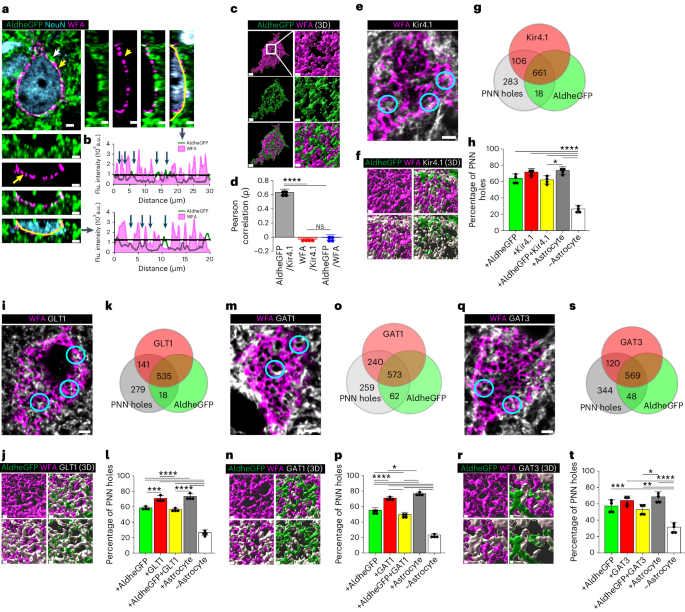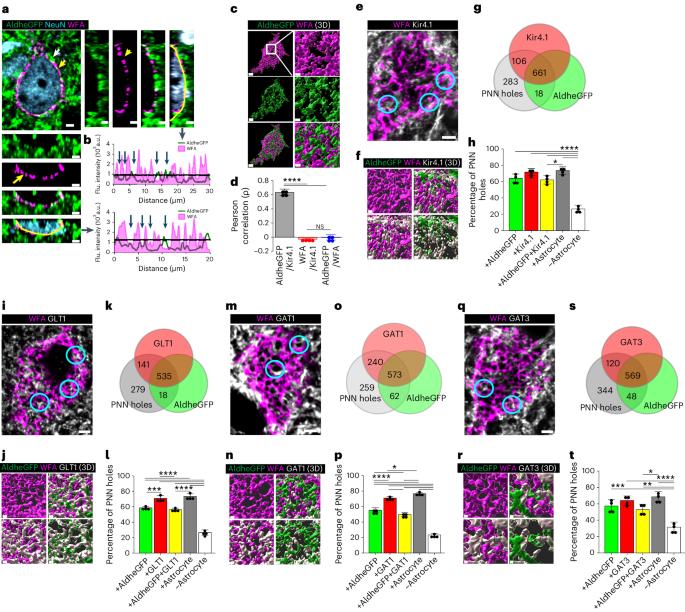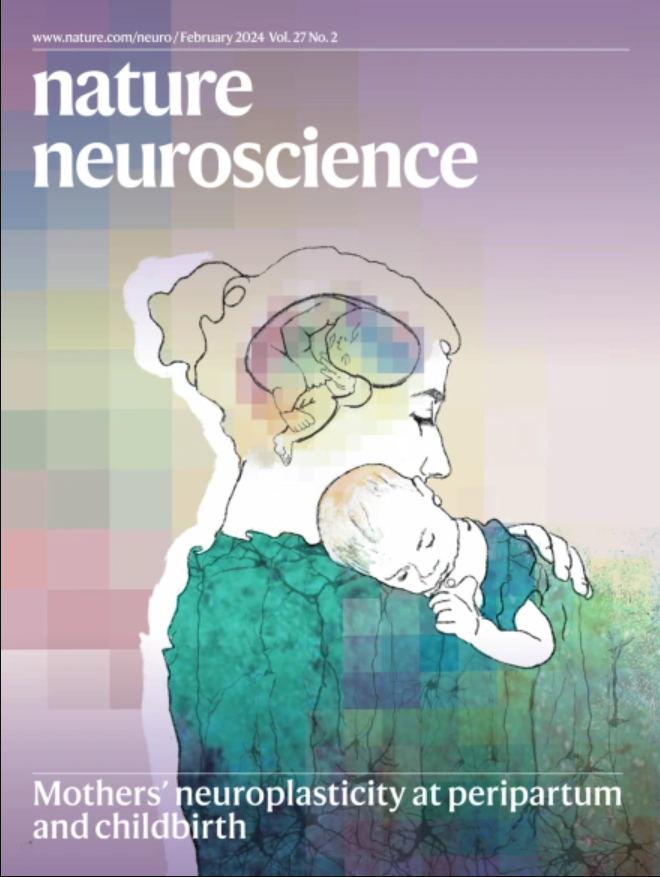Astrocytes require perineuronal nets to maintain synaptic homeostasis in mice
IF 21.2
1区 医学
Q1 NEUROSCIENCES
引用次数: 0
Abstract
Perineuronal nets (PNNs) are densely packed extracellular matrices that cover the cell body of fast-spiking inhibitory neurons. PNNs stabilize synapses inhibiting synaptic plasticity. Here we show that synaptic terminals of fast-spiking interneurons localize to holes in the PNNs in the adult mouse somatosensory cortex. Approximately 95% of holes in the PNNs contain synapses and astrocytic processes expressing Kir4.1, glutamate and GABA transporters. Hence, holes in the PNNs contain tripartite synapses. In the adult mouse brain, PNN degradation causes an expanded astrocytic coverage of the neuronal somata without altering the axon terminals. The loss of PNNs impairs astrocytic transmitter and potassium uptake, resulting in the spillage of glutamate into the extrasynaptic space. Our data show that PNNs and astrocytes cooperate to contain synaptically released signals in physiological conditions. Their combined action is altered in mouse models of Alzheimer’s disease and epilepsy where PNNs are disrupted. Perineuronal nets stabilize synapses inhibiting synaptic plasticity. Here, the authors show that perineuronal nets act as a diffusion barrier facilitating astrocytic clearance of synaptically released ions and neurotransmitters.


小鼠星形胶质细胞需要神经元周围网来维持突触平衡
神经元周围网(PNN)是覆盖快速尖峰抑制性神经元细胞体的密集细胞外基质。PNN 可稳定突触,抑制突触可塑性。我们在这里发现,在成年小鼠的躯体感觉皮层中,快速尖峰中间神经元的突触末梢会定位到 PNN 中的孔上。大约 95% 的 PNN 孔含有突触和表达 Kir4.1、谷氨酸和 GABA 转运体的星形胶质细胞过程。因此,PNN 中的孔包含三方突触。在成年小鼠大脑中,PNN 降解会导致神经元体部的星形胶质细胞覆盖范围扩大,而轴突末端却不会发生改变。PNN 的缺失会影响星形胶质细胞对递质和钾的吸收,导致谷氨酸溢出到突触外空间。我们的数据显示,在生理条件下,PNNs 和星形胶质细胞合作控制突触释放的信号。在阿尔茨海默病和癫痫的小鼠模型中,PNN受到破坏,它们的联合作用也随之改变。
本文章由计算机程序翻译,如有差异,请以英文原文为准。
求助全文
约1分钟内获得全文
求助全文
来源期刊

Nature neuroscience
医学-神经科学
CiteScore
38.60
自引率
1.20%
发文量
212
审稿时长
1 months
期刊介绍:
Nature Neuroscience, a multidisciplinary journal, publishes papers of the utmost quality and significance across all realms of neuroscience. The editors welcome contributions spanning molecular, cellular, systems, and cognitive neuroscience, along with psychophysics, computational modeling, and nervous system disorders. While no area is off-limits, studies offering fundamental insights into nervous system function receive priority.
The journal offers high visibility to both readers and authors, fostering interdisciplinary communication and accessibility to a broad audience. It maintains high standards of copy editing and production, rigorous peer review, rapid publication, and operates independently from academic societies and other vested interests.
In addition to primary research, Nature Neuroscience features news and views, reviews, editorials, commentaries, perspectives, book reviews, and correspondence, aiming to serve as the voice of the global neuroscience community.
文献相关原料
| 公司名称 | 产品信息 | 采购帮参考价格 |
|---|
 求助内容:
求助内容: 应助结果提醒方式:
应助结果提醒方式:


